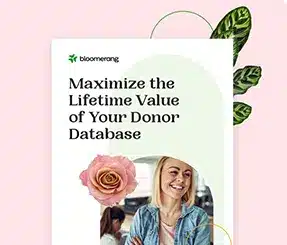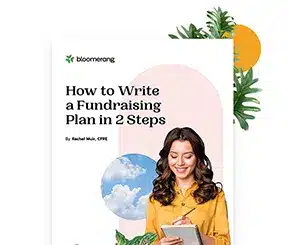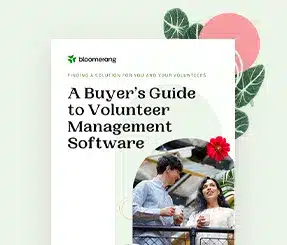5 Tips For A Winning Nonprofit Digital Advertising Program


Full Platform Overview Chat With Us



Full Platform Overview Chat With Us




Think of a brand, any brand. Which business or organization comes to mind first?
Whether it’s one of the big dogs or a smaller brand you love, they have surely advertised to you online. It may be how you first discovered them, and it’s likely a big part of their strategy to stay on your radar.
At the start of my career, “advertising” was a dirty word in the nonprofit sector—as was “marketing.” Luckily, a lot has changed. We’ve come to realize that just like for-profit brands, nonprofits are businesses that need to spend money to make money online.
Nonprofits of all sizes are now running successful digital advertising programs—because you can reap the benefits of digital advertising whether you have hundreds, thousands, or hundreds of thousands to invest.
So… how does a nonprofit advertise successfully?
I have been running digital ads for nonprofits for a decade. When I refer to “digital ads” in this article, I’m referring to the three kinds of digital advertising that are easiest and most affordable:
I believe every nonprofit looking to grow their fans and funds should be running ads using at least one of these formats. Every organization needs to take a slightly different approach. There are so many intricacies to dig into on this topic, but we’ll start with the basics.
It’s important to set expectations and budget accordingly. It’s also important to keep lifetime donor value in mind, because an ad campaign may be breakeven or low return on ad spend but still well worth it to acquire new donors who will give again and again.
The M+R 2022 Benchmarks have a section devoted to nonprofit digital advertising with breakdowns by format, organization size, and cause area. Here are a few key findings from their assessment of 2021 data:
Notice how much more it costs to acquire a donation with ads versus bringing in a lead. The more you’re asking the user to do, the more you will pay.
Asking someone to donate with a conversion ad or competitive search term can cost $50-100 per donation, or more. Meanwhile, garnering video views, clicks to your website, engagement on a piece of content, or email addresses are far less costly endeavors. So if your budget is in the hundreds each month, not in the thousands, raising awareness and generating leads may be the best use of your ad dollars.
While some nonprofits successfully use digital ads solely for direct fundraising, these golden exceptions tend to be organizations that can run urgent, designated campaigns repeatedly. For example, one of my wonderful animal welfare clients, Neighborhood Cats, raises thousands of dollars every month with Facebook ads because we can fundraise for specific cats in need of urgent medical care. People will always donate to save animals!
But if your organization can’t run campaigns to help specific people, animals, families, etc. you will need to map out a supporter journey with more touchpoints to educate people and prime them for that ask, something like this:
Remember, these ads get progressively more costly; Ad 1 will be the cheapest, Ad 4 the most expensive. This kind of “ad funnel” is a great evergreen approach that you can consistently optimize and run year round.
There are two types of digital advertising audiences: people who already know about your nonprofit, and people who don’t. These two groups often require different ads.
You can advertise to your existing base asking them to donate monthly, start a P2P fundraiser, volunteer, or give an increased amount. Ads like this don’t require much money, because you’re targeting a fairly small audience, and can serve as a lovely complement to your email marketing. It’s great when your supporters are seeing the same message in multiple places.
To reach brand new people with ads, you can:
This is where the added value comes in: Your digital ads are also user research. If you’re toying with your organization’s messaging and positioning, or want to better understand your audience’s motivations, digital ads can provide answers.
When I’m developing a new ad program for a client, I test a variety of ad text, creative assets, offers, landing pages, and targeting options. As I learn what’s working, I weed out low performers and prioritize the winners. These rich insights then influence my clients’ email marketing, web content, and overall messaging strategies.
It breaks my heart when a client or colleague tells me, “We tried running ads once; it doesn’t work for us.” I feel like, somewhere, a fairy dies every time a nonprofit gives up on digital advertising too soon.
Clap if you believe! It can take weeks or months of tinkering to strike gold. Too many organizations give up too soon, and they probably weren’t following best practices when their initial attempts failed.
I recommend budgeting for ongoing ads throughout the year and seasonal ad campaigns quarterly. Even if your budget only allows $5 – $10 a day for social media ads and a few hundred dollars per month for a partner to oversee your Google Ad Grant, these investments are like digital fertilizer for your organization’s growth.
And the best part is: You will know whether your ads are working. Let the results guide you! I wish you the best of luck building an effective digital ads program. If you’re looking for training on a specific platform or help developing your ads strategy, feel free to get in touch.


Comments